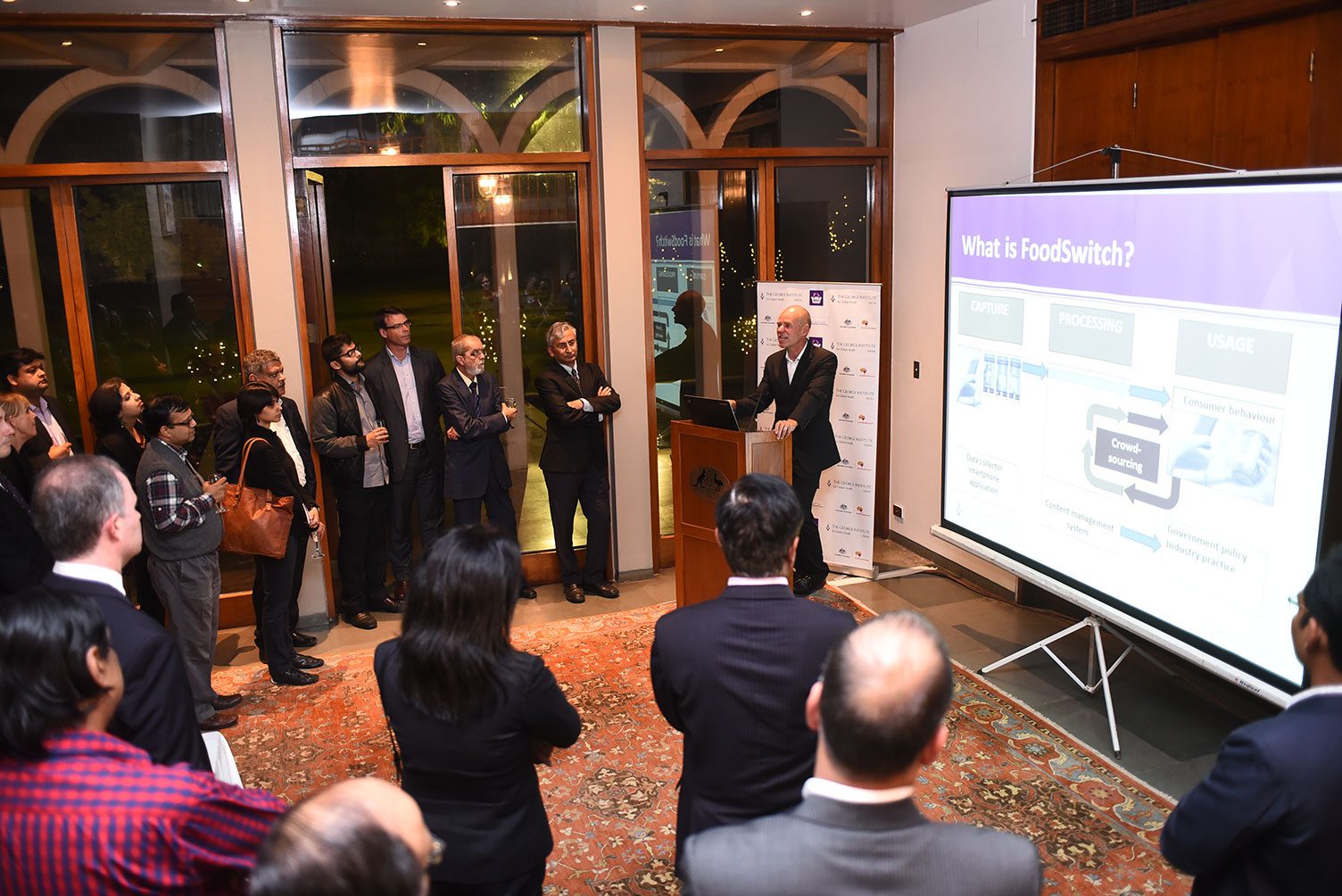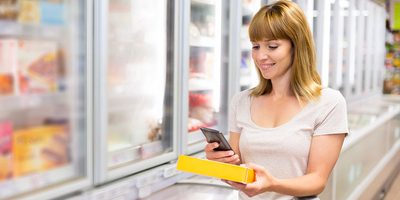
FoodSwitch launched in India
The George Institute for Global Health today launched an innovative nutrition application – FoodSwitch – aimed at helping Indians make healthier food choices and cutting the epidemic of chronic lifestyle diseases.
The mobile application, which was funded in part through an Australia-India Council grant, allows consumers to scan the barcode of a packaged food item and see easy-to-understand information about fat, sugar, and salt levels using the established traffic light labelling system – red (high), amber (OK), and green (good).
Professor Bruce Neal, senior director at The George Institute for Global Health, said the Foodswitch app made the sometimes complicated information on nutrition panels immediately understandable.
"FoodSwitch helps consumers evaluate the nutritional content of packaged foods and, when they can be found, suggests better options,” he said.
Professor Neal, who led the team developing the application, said diets high in salt, sugar and fat were now causing major health problems in India.
“This app will be a great help to those trying to stay healthy. We know that it is really hard for people to grasp the meaning of the nutrition panels on foods."
High Commissioner Patrick Suckling, who launched the application at the Australian High Commission in New Delhi, welcomed the practical engagement between the Australian and Indian health sectors.
“Australia has been engaging with India’s health sector for decades across a wide range of activities in R&D, skills training, commercial engagement and on a government to government level. This FoodSwitch Application highlights the importance of proactive and creative approaches to preventative health measures and demonstrates Australian innovation and commitment to health outcomes,” he said.
Available for iOS and Android consumers free of cost, FoodSwitch is backed by a database of about 10,000 packaged foods compiled in collaboration with the Centre for Chronic Disease Control in India.
If a scanned product is not in the database, consumers can use the phone camera to send in photos so that it can be added.
“In Australia we receive about 150,000 photos each year which allows us to keep the database completely up-to-date,” said Professor Neal.
“This element of consumer participation has been really exciting for us. This will be the largest country that we have launched in and there are unique challenges with the size and scale of the country, as well as the number of foods and grocery stores.
“Consumer participation will be important so that more people can benefit and improve their health.”
The data behind the FoodSwitch app also supports programs by the food industry and government designed to improve the healthiness of packaged food.
Dr Vivekanand Jha, the Executive Director of the George Institute for Global Health in India, said he hoped Indian consumers would use FoodSwitch when they did their shopping.
“But we also want to work with the Indian food industry and government to improve the quality of the food supply. If we can make even small changes to the average levels of salt, sugar and harmful fat in the food supply, this could go a long way to improving India’s epidemic of non-communicable diseases,’’ he said.
The George Institute is a not-for-profit organisation conducting scientific research in public health and medical sciences. FoodSwitch had been previously launched in Australia, New Zealand, the United Kingdom, and South Africa.




